Are you feeling stressed out by the mess in your family’s home? We understand the struggle. But don’t worry, we have top tips for achieving a minimalist lifestyle in a family environment.
From creating individual spaces for each family member to embracing the concept of communal belongings, we’ll show you how to reduce physical clutter and promote a more meaningful and intentional lifestyle.
With our practical tips and mindful approach, you’ll be well on your way to a clutter-free and harmonious family home.
Key Takeaways
- Establish personal boundaries and allocate individual areas for each family member
- Limit toys and promote meaningful play by providing open-ended toys and engaging in pretend play
- Educate kids about minimalism through lessons in schools, promoting a minimalist wardrobe, and teaching the positive impact on the environment
- Go digital to reduce physical clutter and simplify life, by eliminating the need for physical storage and enhancing accessibility and security.
Allocating Personal Spaces: Creating Individual Areas for Each Family Member
We’ll start by discussing the importance of creating designated personal spaces for each family member.

When living in a shared space, it’s crucial to establish personal boundaries to ensure everyone feels respected and valued.
Allocating individual areas allows each family member to have a space they can call their own, where they can relax, unwind, and recharge.
These personal spaces serve as retreats from the bustle of shared living, providing a sense of privacy and solitude.
Whether it’s a small corner in the living room, a dedicated workspace, or a cozy nook in the bedroom, having a personal area fosters a sense of ownership and autonomy.
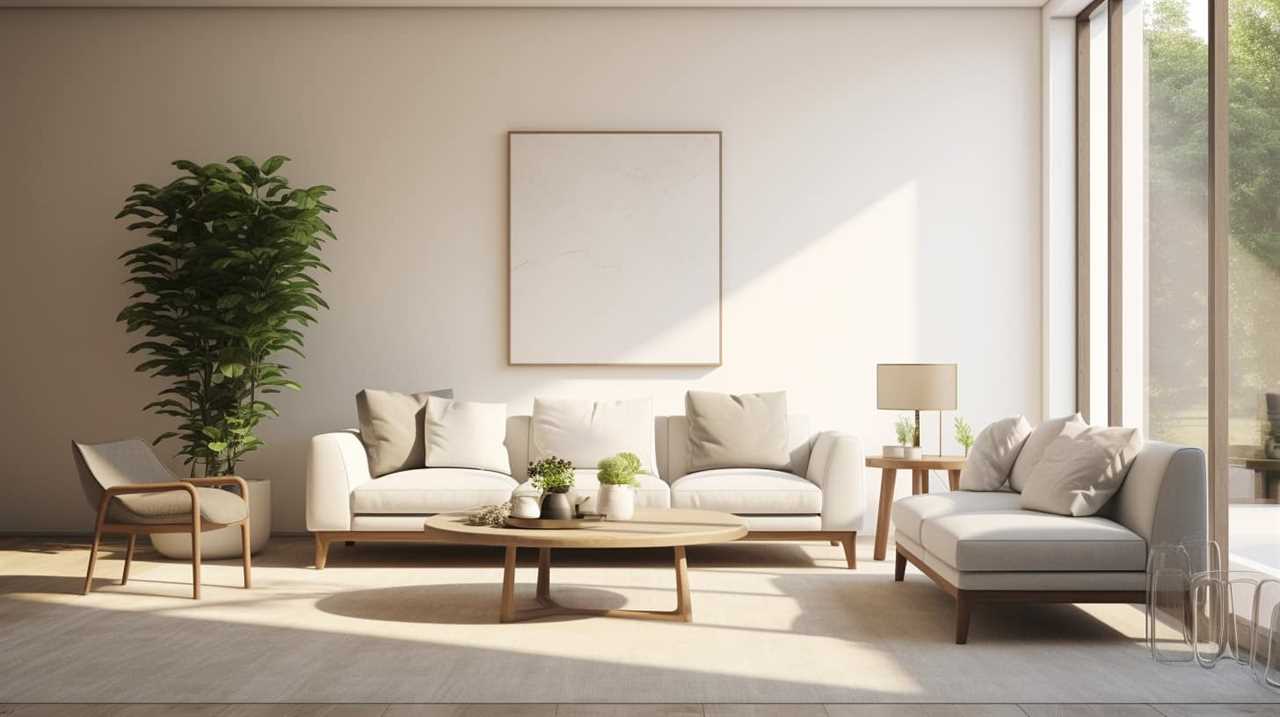
It also promotes harmony and reduces conflicts by giving each family member a space to express themselves and pursue their interests.
Creating designated personal spaces is a practical way to enhance the overall well-being and happiness of everyone in the family.
Concept of Shared Possessions: Embracing the Idea of Communal Belongings
Let’s explore the benefits of incorporating the concept of communal belongings into our minimalist family lifestyle.
Embracing the idea of shared possessions can bring us closer as a family and foster a sense of unity and togetherness. By designating certain areas or items as communal, we create shared spaces that encourage collaboration and cooperation.
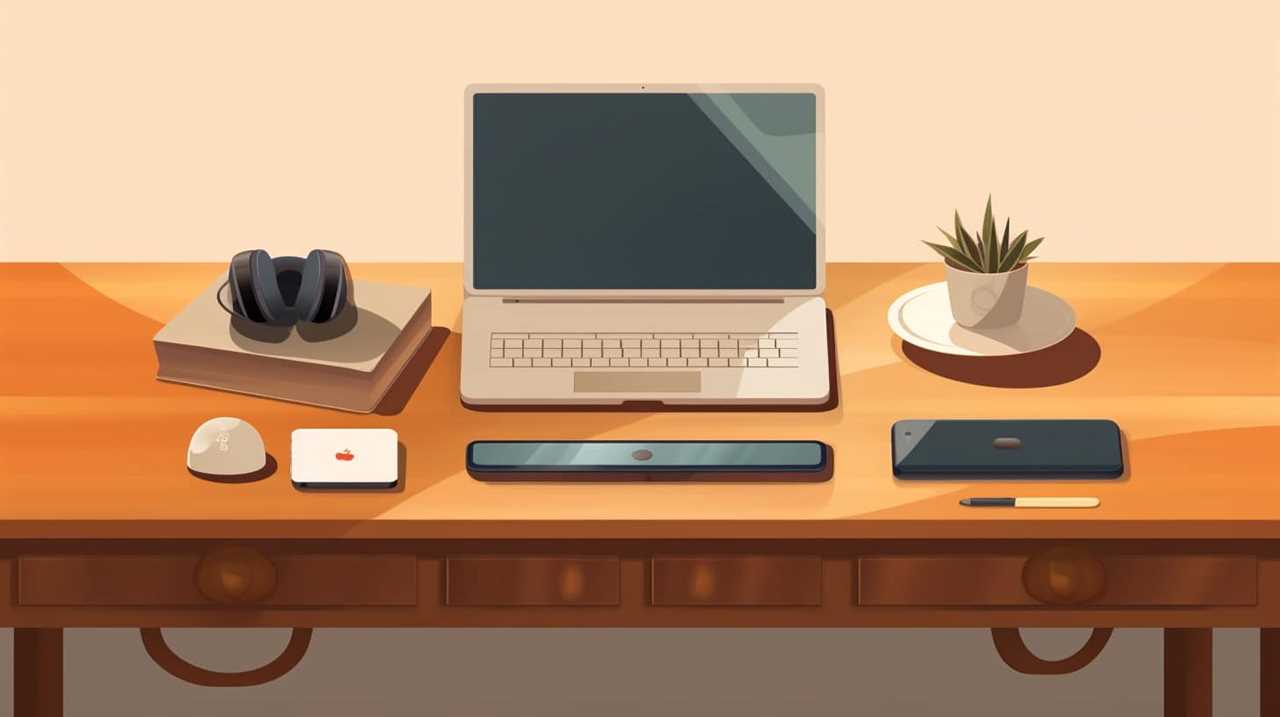
This means that instead of each family member having their own personal belongings, we can focus on items that serve the entire family’s needs. Not only does this help us simplify our lives, but it also teaches our children the value of sharing and working together.
Communal living allows us to prioritize experiences and relationships over material possessions, fostering a sense of community and harmony within our family.
Limiting Toys: Reducing the Number of Toys and Promoting Meaningful Play
As we strive to implement minimalist living in our family setting, one effective strategy is to limit the number of toys and promote meaningful play. By reducing the materialism associated with an abundance of toys, we can create an environment that encourages children to engage in more meaningful and imaginative play experiences. This not only helps to declutter our homes, but also fosters creativity, problem-solving skills, and social interaction in our children. To illustrate this strategy, we can use the following table:
| Benefits of Limiting Toys | Ways to Promote Meaningful Play | Tips for Reducing Materialism |
|---|---|---|
| Encourages imagination and creativity | Provide open-ended toys like building blocks or art supplies | Teach children the value of experiences over possessions |
| Promotes problem-solving skills | Encourage outdoor play and exploration | Teach children to appreciate and care for their belongings |
| Enhances social interaction | Engage in pretend play with your children | Encourage sharing and donating toys to those in need |
Educating Kids About Minimalism: Teaching Children the Principles of Minimalism
Fortunately, by actively involving our children and using age-appropriate methods, we can effectively educate them about minimalism and teach them the principles of living with less.
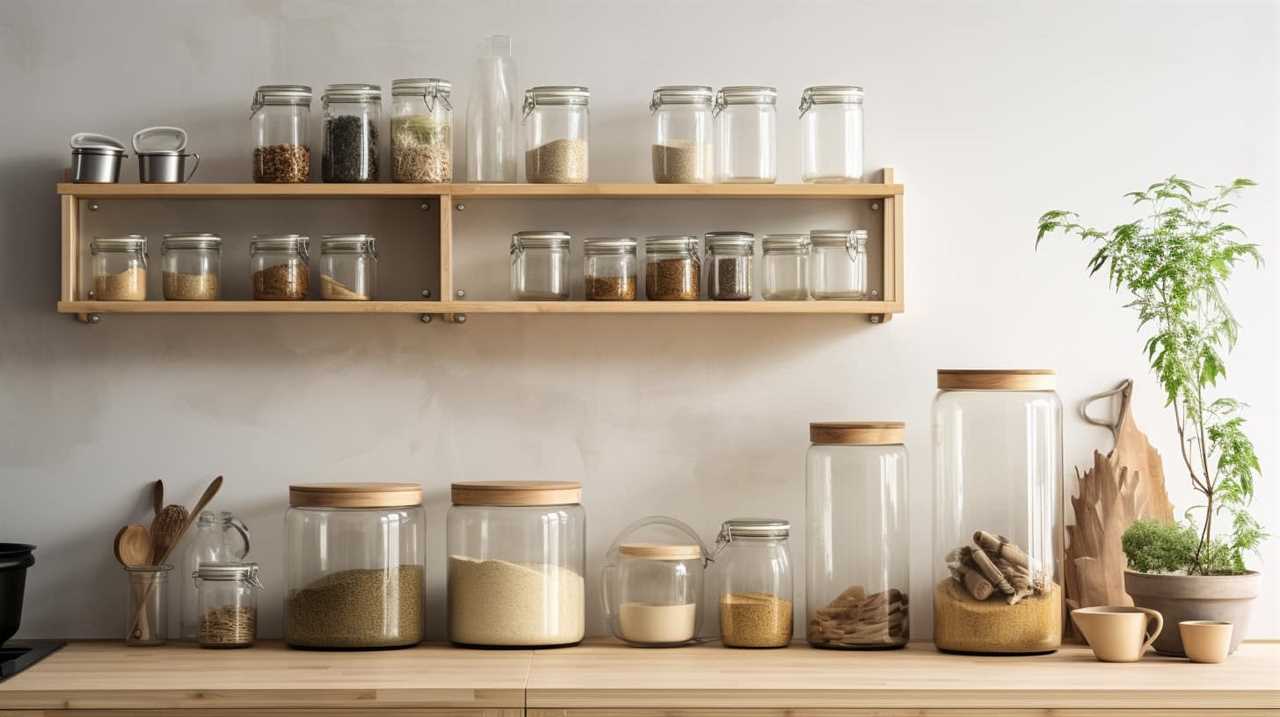
One way to educate kids about minimalism is by teaching it in schools. Schools can incorporate lessons on minimalism, such as the importance of reducing waste, reusing items, and embracing simplicity. This can help children understand the value of living with less and the impact it can have on the environment.
Another way to teach children about minimalism is by encouraging them to have a minimalist wardrobe. By selecting a few versatile and high-quality clothing items, kids can learn to appreciate the value of simplicity and the benefits of having a clutter-free closet.
Teaching children the principles of minimalism at an early age can help them develop a lifelong mindset of simplicity and gratitude.
Benefits of Going Digital: Embracing Digital Solutions to Reduce Physical Clutter
By embracing digital solutions, we can significantly reduce physical clutter in our homes and lives. Going digital offers numerous benefits, especially when it comes to reducing paper clutter and embracing digital minimalism.
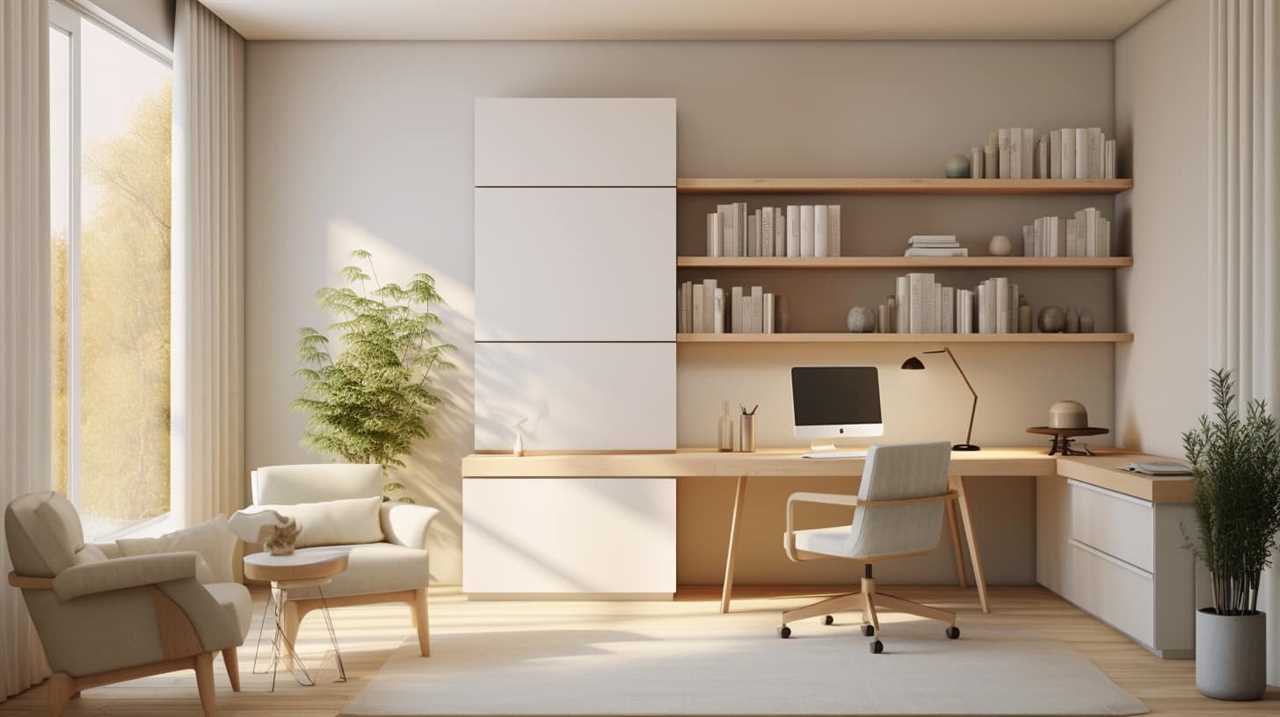
Here are five reasons why going digital can help simplify your life:
-
Eliminate the need for physical storage: By storing documents, photos, and files digitally, you can free up physical space in your home, reducing the need for bulky filing cabinets or shelves.
-
Easy organization and retrieval: Digital files can be easily organized and sorted, making it quicker and more efficient to find what you need. No more searching through stacks of paper!
-
Reduce waste and environmental impact: Going digital means less paper usage, helping to conserve forests and reduce waste.

-
Increased accessibility: Digital files can be accessed from anywhere with an internet connection, allowing you to have important documents at your fingertips wherever you go.
-
Enhanced security: Digital files can be encrypted and protected with passwords, providing an extra layer of security compared to physical documents that can be lost or damaged.
Investing in Lasting Items: Choosing Quality Over Quantity for Long-Term Value
When it comes to minimalist living in a family setting, one of the best strategies is investing in lasting items that prioritize quality over quantity.
By choosing items that are built to last, we can reduce waste and clutter in our homes, while also saving money in the long run.
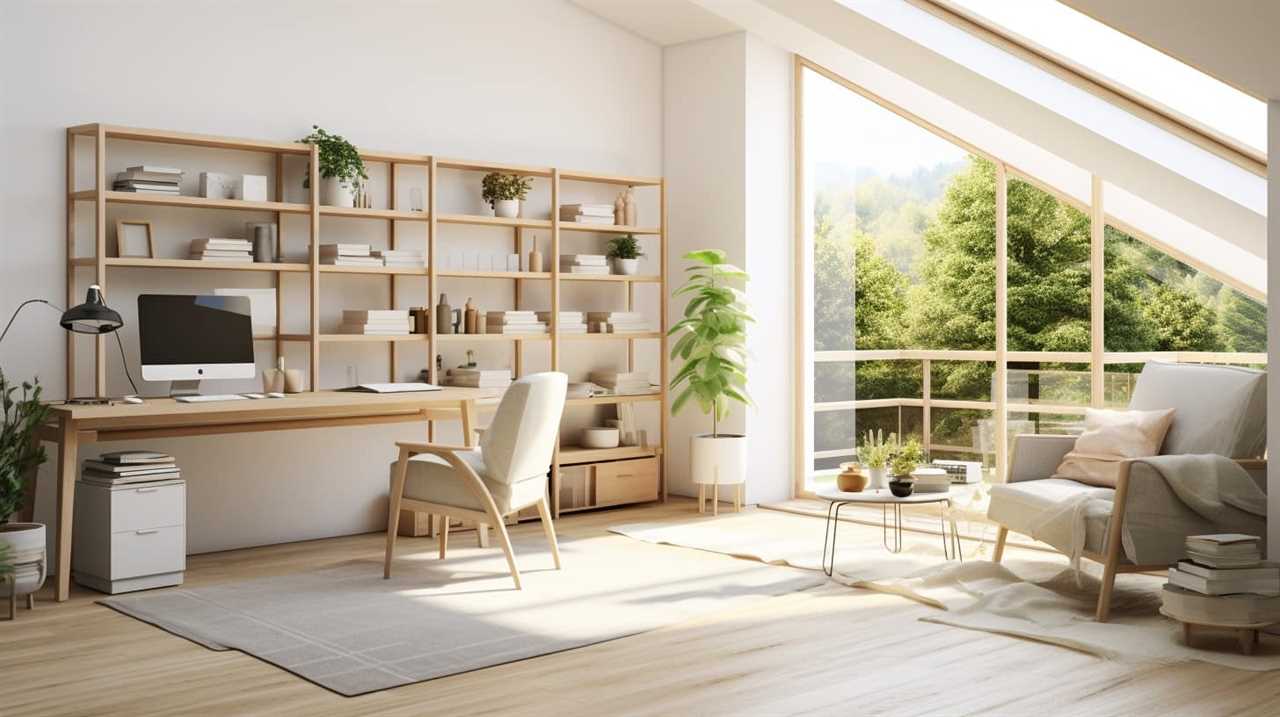
Quality items not only serve their purpose for a longer time but also tend to have better resale value, making them a smart investment for a minimalist lifestyle.
Long-Term Value of Quality
As a family, we prioritize investing in lasting items that offer long-term value by choosing quality over quantity. When it comes to minimalism, it’s important to focus on items that will stand the test of time and provide practical benefits.
Here are five practical investments that maximize value:
-
Durable furniture: Investing in well-made furniture ensures it will last for years to come, reducing the need for constant replacements.
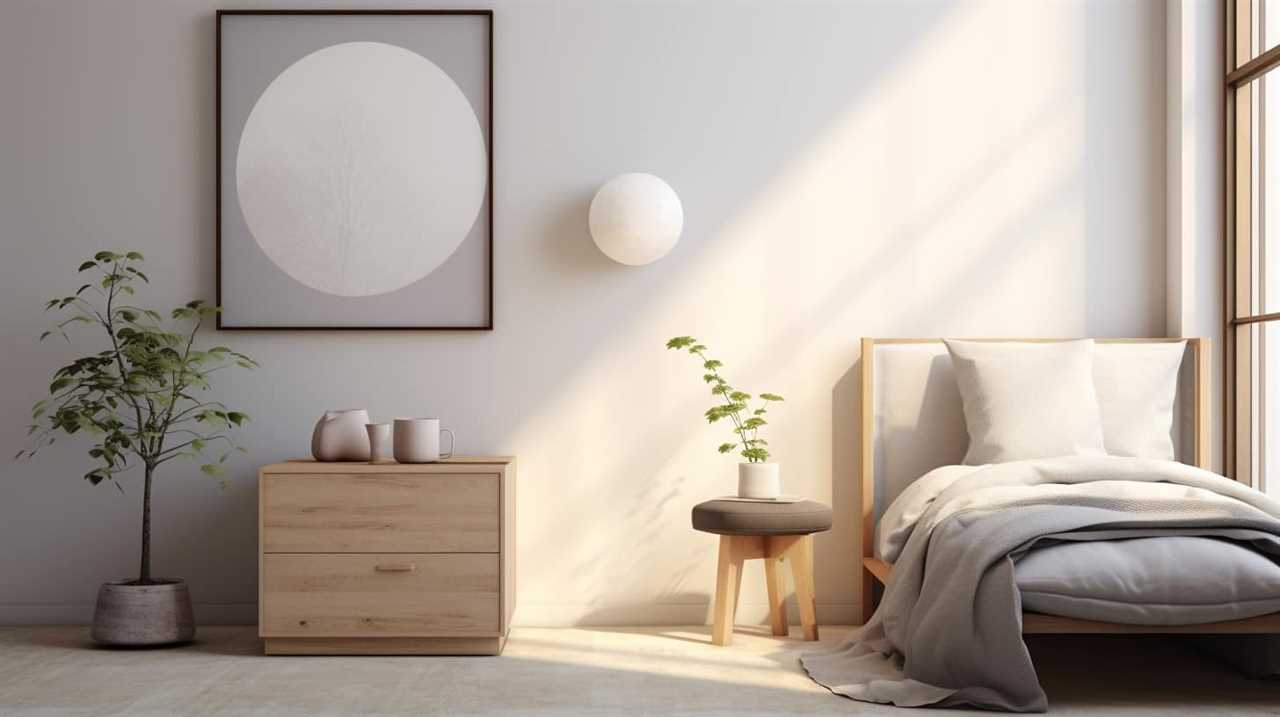
-
Quality kitchen appliances: Opting for high-quality appliances not only improves the functionality of your kitchen but also saves money on repairs and replacements.
-
Reliable electronics: Choosing reliable electronics means they’ll last longer and require fewer repairs or upgrades.
-
Timeless clothing: Building a wardrobe with timeless pieces made from high-quality materials ensures they’ll remain in style and last longer.
-
Efficient home systems: Upgrading to energy-efficient appliances and systems helps reduce utility bills and minimizes environmental impact.
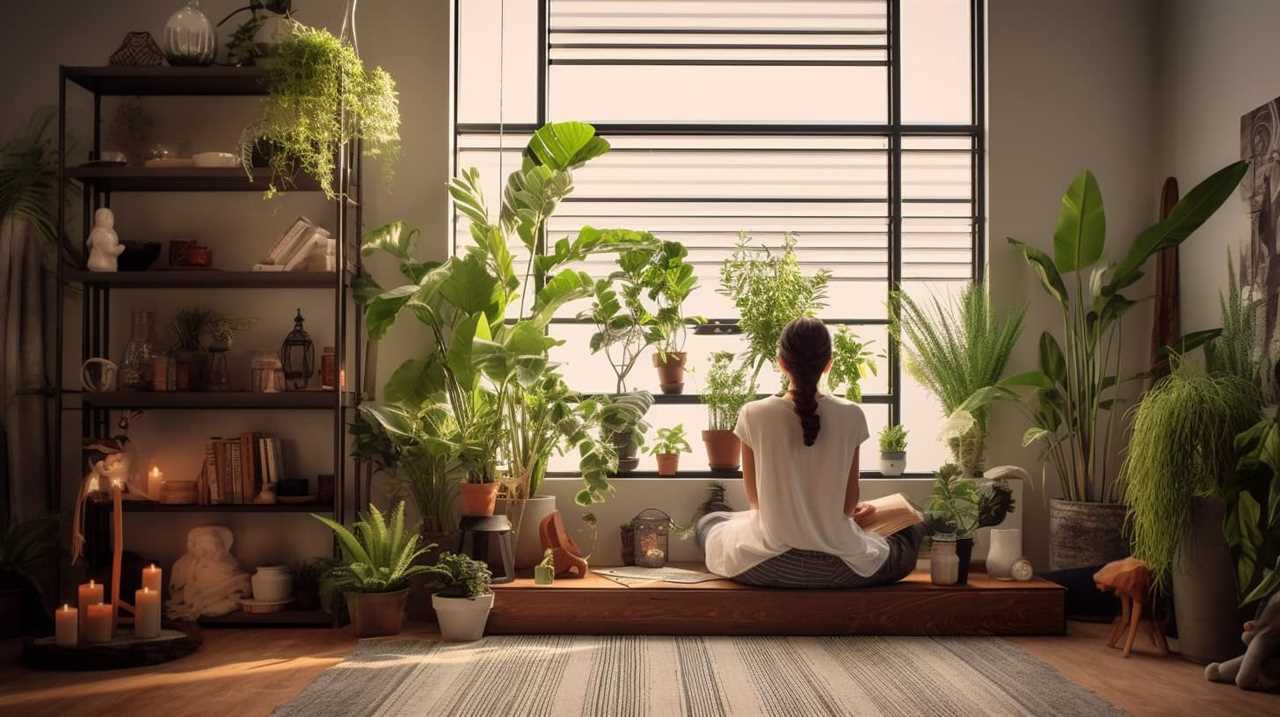
Minimalism and Lasting Items
We prioritize longevity and value in our minimalist lifestyle by choosing quality over quantity and investing in lasting items.
When it comes to fashion, opting for lasting pieces is key. Look for well-made garments that are timeless in style, such as classic dresses or tailored jackets. These versatile pieces can be dressed up or down and will stand the test of time.
In terms of furniture, opting for timeless designs made from high-quality materials ensures that they’ll last for years to come. Consider investing in pieces like solid wood tables or leather sofas that not only look beautiful but also withstand regular use.
Choosing Quality Over Quantity
In our pursuit of minimalist living, we prioritize investing in lasting items of high quality, ensuring long-term value for our family. By adopting a mindful purchasing approach, we can make intentional choices that align with our minimalist goals.

One area where this mindset is particularly beneficial is in building a minimalist wardrobe. Here are five key items to consider investing in:
-
Timeless basics: Opt for classic pieces like white shirts, black pants, and neutral sweaters that can be mixed and matched effortlessly.
-
Versatile outerwear: Look for a well-made coat or jacket that can be worn in various seasons and styles.
-
Quality footwear: Invest in durable shoes that offer both comfort and style, ensuring they’ll last for years.
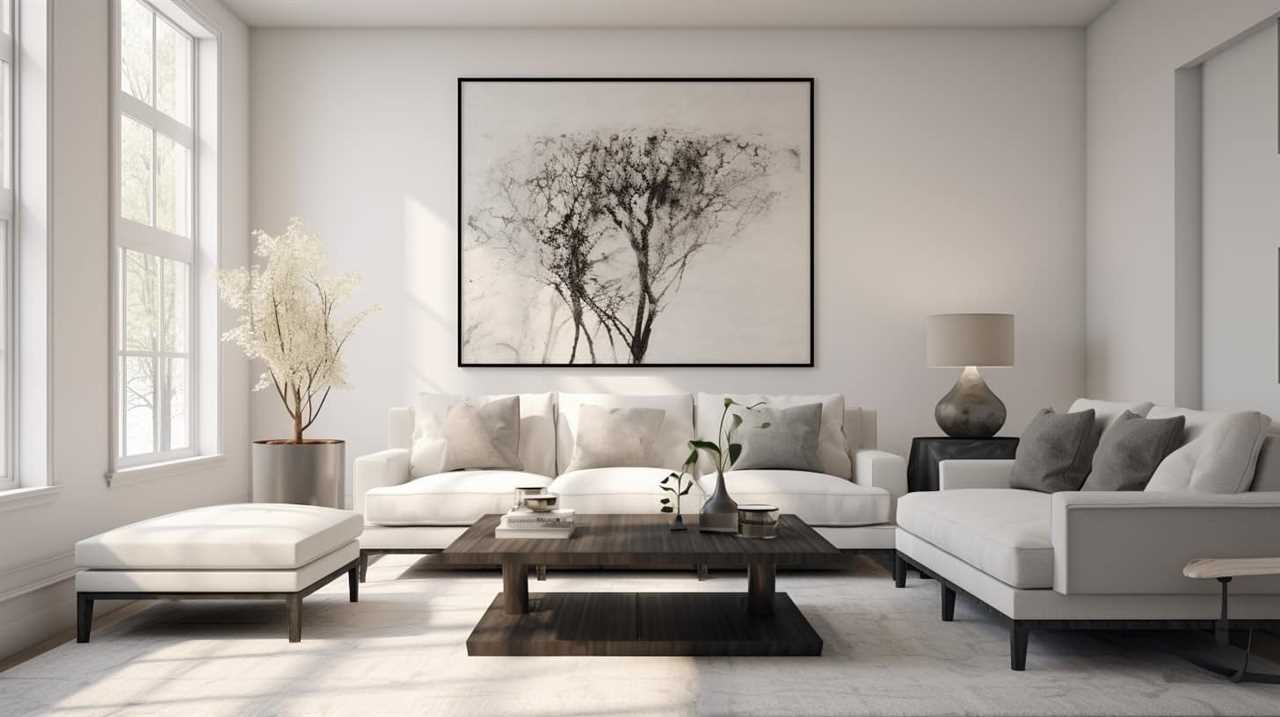
-
Functional accessories: Choose accessories that serve a purpose, such as a versatile bag or a practical hat.
-
Well-fitting denim: Find a pair of jeans that flatter your body shape and are made from durable, high-quality denim.
Impact of Reducing Decorative Items: Streamlining the Aesthetics of the Living Space
Reducing decorative items in our living space can have a significant impact on enhancing visual harmony and simplifying visual distractions. By streamlining the aesthetics of our home, we create a more peaceful and organized environment that promotes relaxation and focus.
Removing unnecessary decorations allows us to appreciate the beauty of a few carefully chosen pieces and creates a sense of simplicity and clarity in our living space.

Enhancing Visual Harmony
By gradually decluttering and simplifying our living space, we can greatly enhance the visual harmony in our home. Creating a visually harmonious living space not only promotes a sense of calm and tranquility, but it also maximizes functionality and allows our family to fully enjoy the space we have.
Here are five organizing techniques that can help streamline the aesthetics of our living space:
- Adopt a minimalist approach: Let go of unnecessary decorative items and embrace simplicity.
- Use storage solutions: Invest in storage bins, baskets, and shelves to keep items organized and out of sight.
- Group similar items together: Arrange similar items together to create a cohesive and visually pleasing display.
- Display meaningful items: Select a few sentimental or cherished items to showcase, rather than cluttering the space with too many decorations.
- Embrace negative space: Allow for empty spaces in your home to create a sense of balance and visual calm.
Simplifying Visual Distractions
We can achieve a more streamlined and visually pleasing living space by minimizing the number of decorative items in our home. By simplifying the visual distractions, we create a space that promotes focus, tranquility, and a sense of calm. One effective way to minimize distractions is by simplifying digital devices and their placement. For example, we can designate a specific area for charging and storing devices, reducing the temptation to constantly check them. Another strategy is to declutter and organize our living space, keeping only essential items and removing any unnecessary decorations or knick-knacks. This creates a clean and open environment that allows for better concentration and reduces visual clutter. By minimizing distractions, we can create a more peaceful and harmonious living space for our family.
| Strategies for Simplifying Visual Distractions |
|---|
| Simplify digital devices and their placement |
| Declutter and organize living space |
Prioritizing Experiences Over Gifts: Focusing on Creating Memories Instead of Material Possessions
Let’s cherish moments together and emphasize creating lasting memories rather than accumulating material possessions. By prioritizing experiences over gifts, we can foster stronger connections and create a more fulfilling family life. Here are some practical ways to promote this mindset:

-
Plan experiential gifts: Instead of traditional presents, consider giving experiences like concert tickets, spa days, or cooking classes.
-
Embrace minimalist travel: Explore new destinations with a minimalist approach, focusing on immersing in local culture rather than buying souvenirs.
-
Create family traditions: Establish rituals that revolve around shared experiences, such as annual camping trips or monthly game nights.
-
Document memories: Capture moments through photos, videos, or journals, allowing you to relive and treasure them in the future.

-
Practice gratitude: Teach your family to appreciate the intangible blessings in life, fostering a mindset of gratitude and contentment.
Responsible Parenting: Instilling Minimalist Values and Habits in Children
When it comes to responsible parenting and instilling minimalist values in children, one of the most effective strategies is setting an example. Children learn by observing their parents, so it’s important to demonstrate a minimalist lifestyle by decluttering and prioritizing experiences over material possessions.
Additionally, it’s crucial to introduce age-appropriate decluttering activities to teach children the importance of letting go of unnecessary belongings and valuing what truly matters.
Setting an Example
As parents, we can start instilling minimalist values and habits in our children from an early age. By setting an example, we can teach them the importance of living with less and valuing experiences over material possessions. Here are five ways to do that:

-
Practice what you preach: Show your children that you live by the minimalist principles you want them to follow.
-
Involve them in decision-making: Let your children have a say in decluttering their own spaces, helping them understand the importance of letting go.
-
Encourage gratitude and generosity: Teach your children to appreciate what they’ve and to give to those in need.
-
Foster creativity and resourcefulness: Encourage your children to find joy in simple activities and to make the most of what they have.

-
Emphasize experiences over things: Create memories as a family by engaging in activities that don’t require material possessions.
Age-Appropriate Decluttering
We believe in involving our children in age-appropriate decluttering activities to instill minimalist values and habits in them.
Age-appropriate decluttering means considering the child’s age and abilities when deciding what items to declutter. For younger children, it can be as simple as helping them sort through their toys and deciding which ones they no longer play with.
As children get older, they can be encouraged to take more ownership of their belongings and make decisions about what to keep and what to let go of.

When it comes to minimizing sentimental items, it’s important to teach children the value of memories over physical objects. Encourage them to keep a few significant items that hold special meaning, while also teaching them the importance of letting go and not becoming too attached to material possessions.
Simplified Routines: Establishing Efficient and Minimalist Daily Routines
Let’s start by establishing three efficient and minimalist daily routines for the family.
-
Create a streamlined morning routine:
Set out clothes the night before, have a designated breakfast area, and establish a morning checklist to ensure everyone is ready on time. -
Implement an organized meal planning routine:
Plan meals for the week, make a grocery list, and prep ingredients in advance to save time and reduce food waste.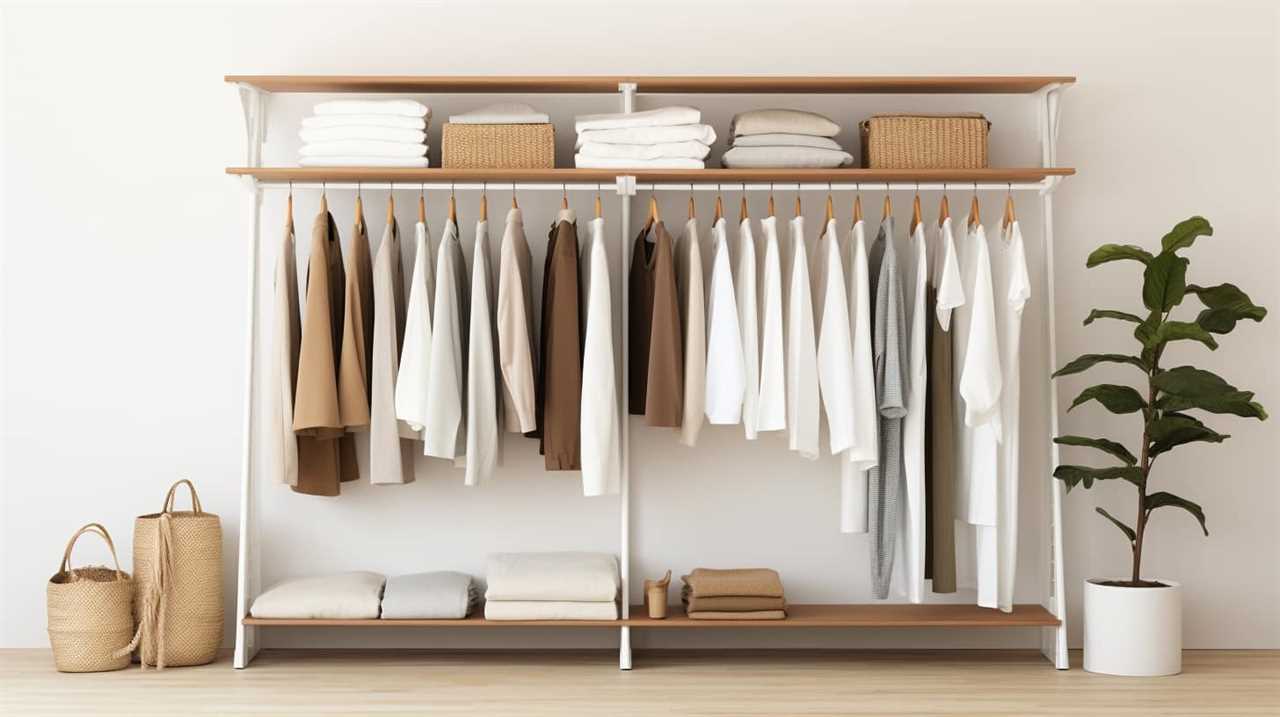
-
Simplify the evening routine:
Establish a designated place for backpacks and shoes, have a quick tidy-up session before bed, and create a calming bedtime routine to promote better sleep.
By following these routines, you can save time, reduce stress, and create a more peaceful and organized home environment.
Efficient meal planning and a minimalist wardrobe will further simplify your daily life, allowing you to focus on what truly matters – spending quality time with your family.
Maintaining a Clutter-Free Environment: Tips for Keeping the Home Organized and Tidy
Our family’s main goal is to maintain a clutter-free environment by implementing effective strategies for organizing and tidying our home.
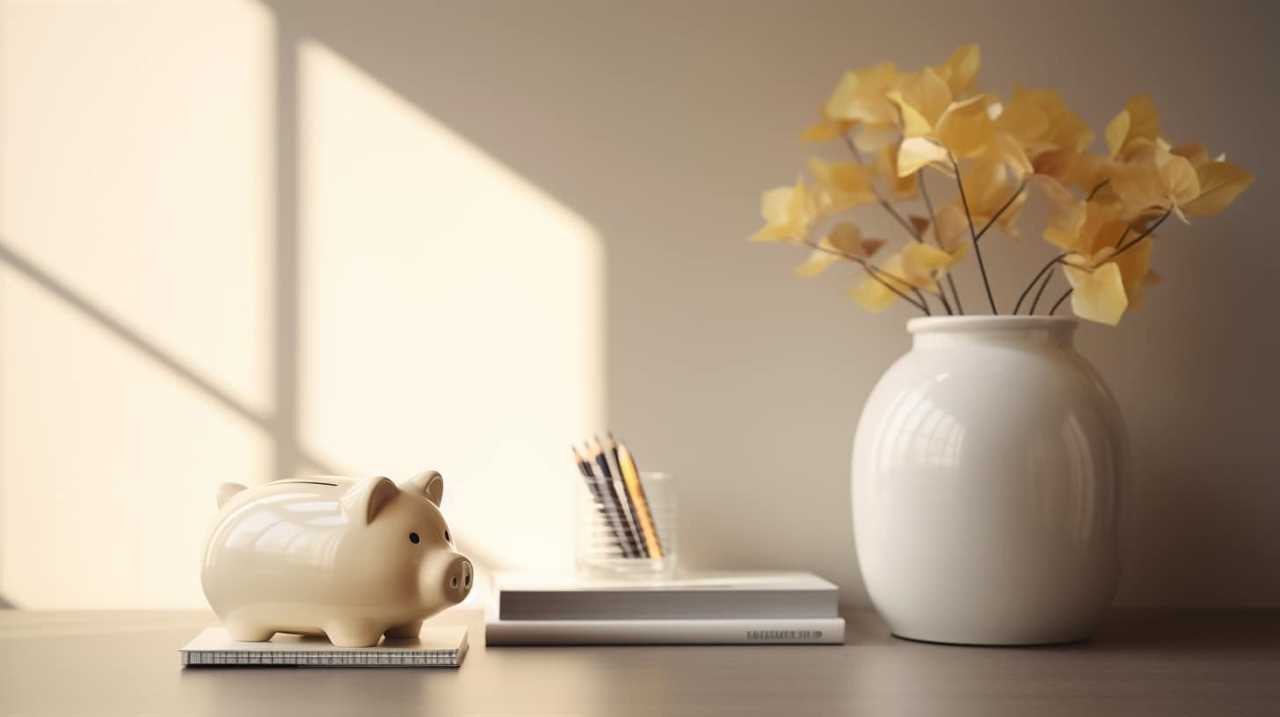
To maximize efficiency, we’ve established organizing systems that help us stay on top of clutter. One key strategy is to designate specific places for items and ensure they’re always returned to their designated spot. This prevents things from piling up and makes it easier to find what we need.
We also regularly declutter our belongings, getting rid of anything we no longer use or need. This helps us create more space and reduces the amount of stuff we’ve to manage.
Additionally, we prioritize daily tidying routines, such as making the bed, doing the dishes immediately after meals, and putting away toys and other items after use.
Mindful Consumption: Being Intentional About What Is Brought Into the Home
When it comes to mindful consumption in a family setting, we can start by developing purposeful shopping habits. This means being intentional about what we bring into our homes and considering whether it aligns with our values and needs.
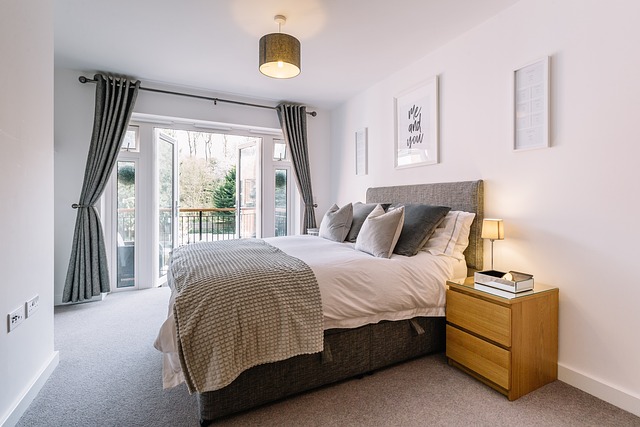
Embracing sustainable choices, such as opting for eco-friendly products and supporting local businesses, can also contribute to a more mindful approach to consumption.
Lastly, creating clutter-free spaces allows us to focus on what truly matters and reduces the urge to constantly acquire more.
Purposeful Shopping Habits
We actively strive to make purposeful shopping habits a priority in our family, ensuring that we’re intentional about what we bring into our home. By embracing sustainable shopping and practicing conscious consumerism, we not only reduce waste but also contribute to a healthier planet.
Here are some practical tips to help you develop purposeful shopping habits:

-
Create a shopping list and stick to it. This prevents impulse purchases and helps you focus on what you really need.
-
Prioritize quality over quantity. Invest in well-made, durable items that will last longer and reduce the need for replacements.
-
Research brands and support those with sustainable practices. Look for certifications like Fair Trade or organic to ensure ethical and eco-friendly production.
-
Consider secondhand options. Thrift stores, online marketplaces, and clothing swaps are great places to find unique items while reducing waste.
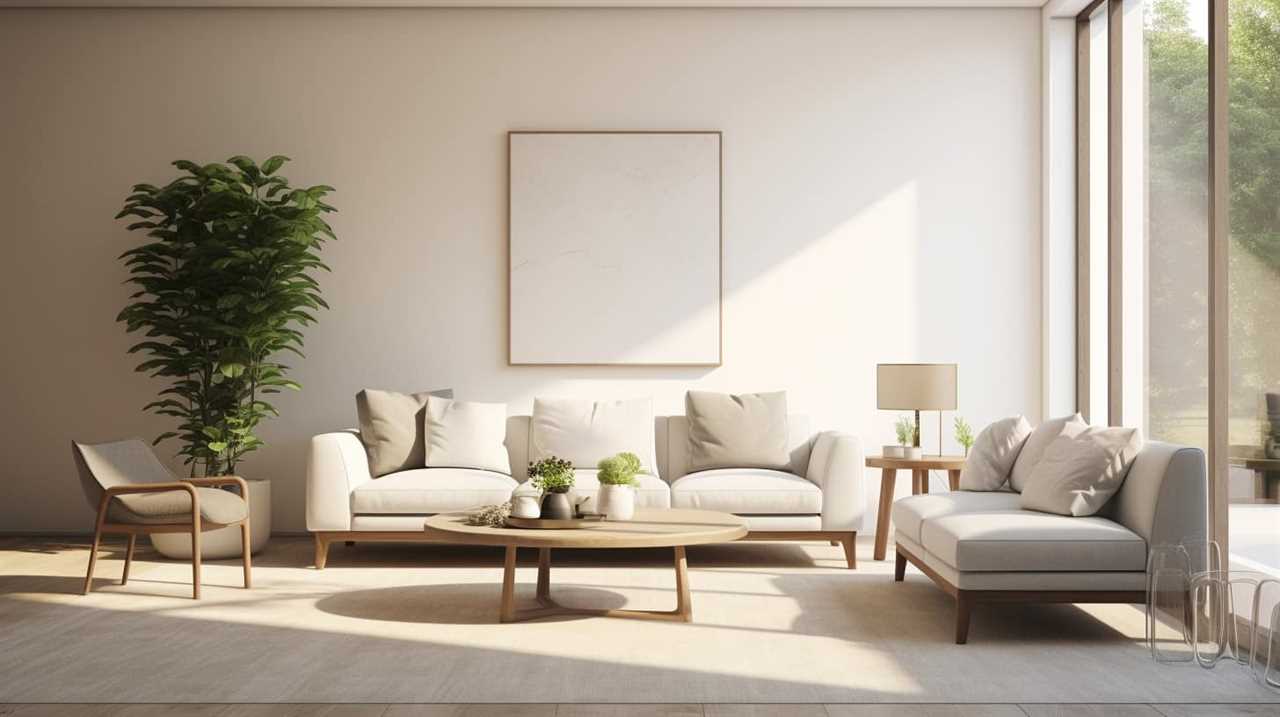
-
Practice mindful spending. Before making a purchase, ask yourself if it aligns with your values and if it’s truly necessary.
By adopting purposeful shopping habits, we can make a positive impact on the environment and create a more intentional and clutter-free home.
This leads us to the next section on embracing sustainable choices.
Embracing Sustainable Choices
To truly embrace sustainable choices, it is important that we are mindful about what we bring into our home and consciously consider the impact of our consumption. This means adopting sustainable fashion practices and opting for eco-friendly cleaning products. By making intentional choices in our shopping habits, we can reduce our environmental footprint and contribute to a healthier planet for future generations.
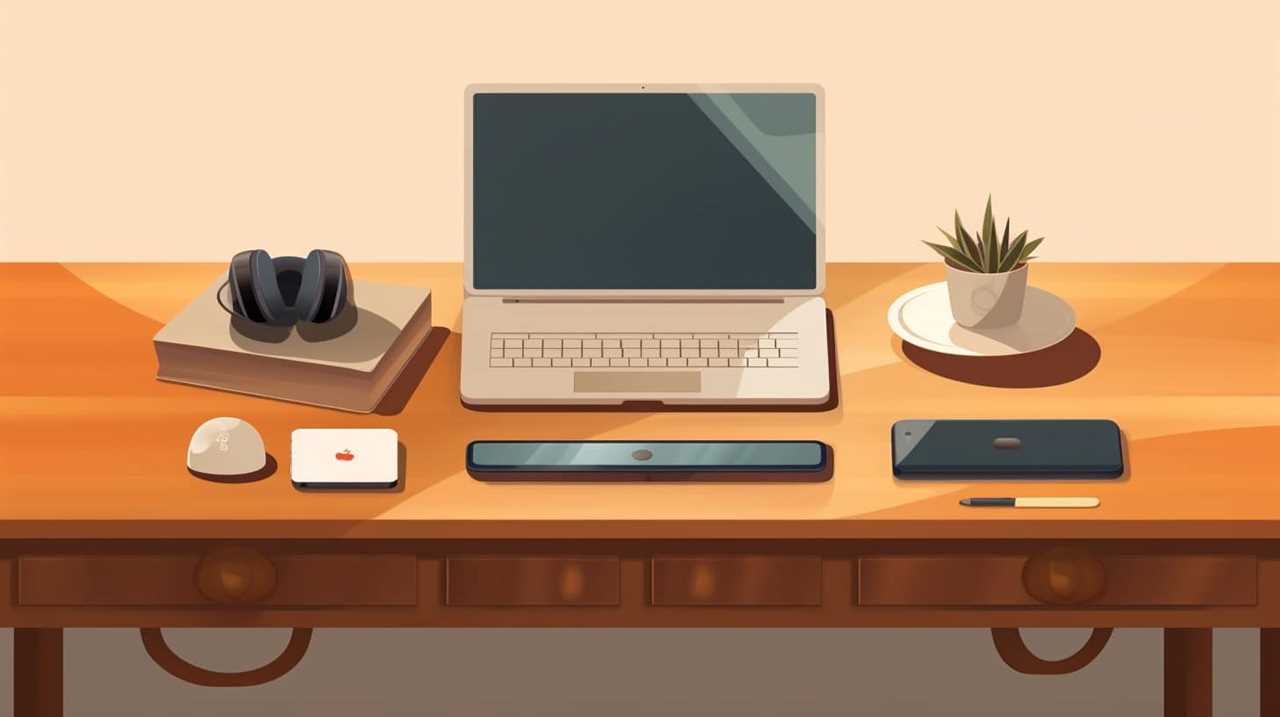
Here is a table to help us understand how we can incorporate sustainable choices into our daily lives:
| Sustainable Fashion | Eco-Friendly Cleaning |
|---|---|
| Shop secondhand or vintage | Make your own cleaning products using natural ingredients |
| Invest in high-quality, timeless pieces | Use reusable cleaning cloths instead of disposable wipes |
| Choose sustainable fabrics like organic cotton or bamboo | Opt for environmentally friendly cleaning brands |
| Repair or repurpose clothing instead of throwing it away | Reduce water and energy usage by using cold water and energy-efficient appliances |
Creating Clutter-Free Spaces
Let’s focus on creating clutter-free spaces by being intentional about what items are brought into our home. By organizing belongings effectively, we can create an environment that promotes calmness and simplicity.
Here are five tips to help you achieve clutter-free spaces:
-
Declutter regularly: Take time to go through your belongings and get rid of items that no longer serve a purpose or bring you joy.

-
Practice mindful consumption: Before making a purchase, ask yourself if the item is truly necessary or if it will add value to your life.
-
Set boundaries: Establish limits on the number of items you bring into your home. This will help prevent clutter from accumulating.
-
Create designated spaces: Assign specific areas for different categories of belongings, such as toys, books, or kitchen utensils.
-
Use storage solutions: Invest in storage containers, shelves, and organizers to keep your belongings neatly organized and easily accessible.
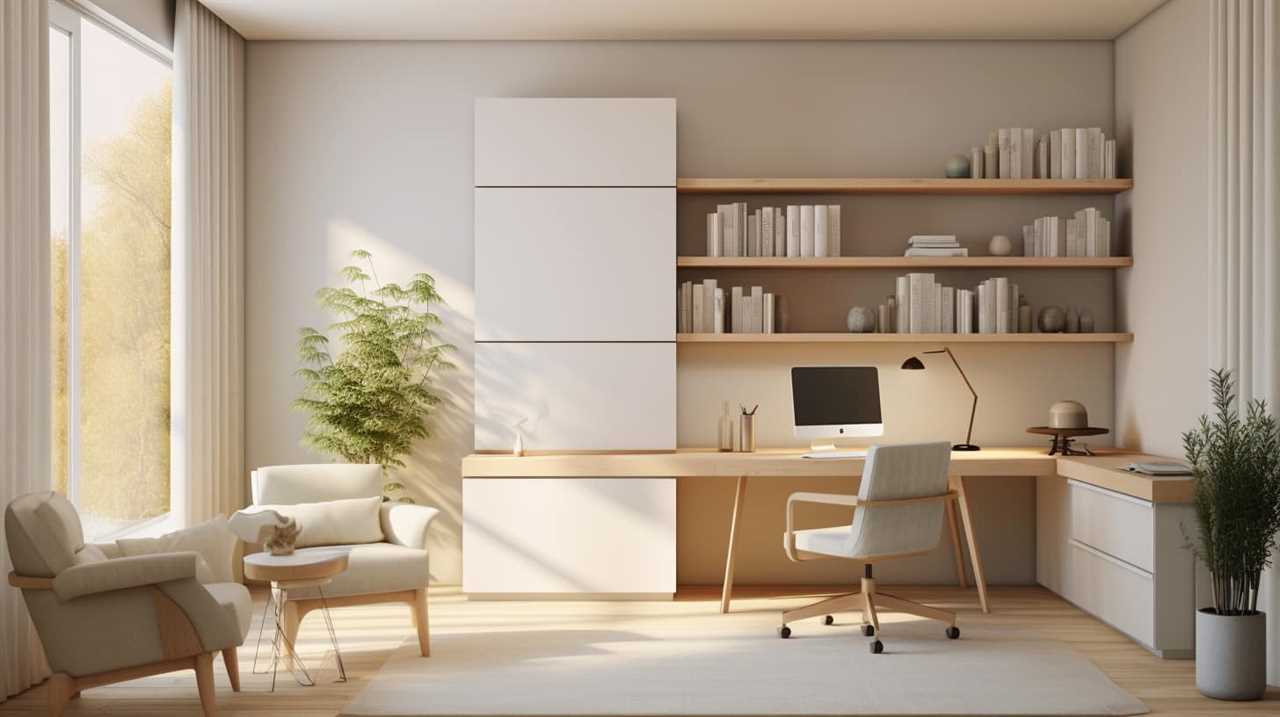
Embracing Minimalist Design: Incorporating Minimalist Principles in Home Decor
Our family embraces minimalist design by incorporating simple and clean elements into our home decor. We believe that a clutter-free and organized space not only promotes a sense of calm, but also allows for better functionality and productivity.
When incorporating minimalist principles in interior design, we focus on decluttering and simplifying our living spaces. We opt for furniture with clean lines and neutral colors, which create a sense of openness and tranquility. Additionally, we make use of natural light and open floor plans to enhance the feeling of spaciousness.
Minimalist decor ideas for family homes include incorporating storage solutions that are both practical and aesthetically pleasing. By maximizing storage space while minimizing clutter, we create a harmonious environment that supports our family’s needs and promotes a sense of peace and serenity.
Now, let’s explore the next section on creating functional storage solutions.

Creating Functional Storage Solutions: Maximizing Storage Space While Minimizing Clutter
With careful planning and strategic organization, we can maximize storage space while minimizing clutter in our family setting. Here are five functional storage solutions that embrace minimalist design:
-
Use multi-functional furniture: Opt for pieces that serve multiple purposes, such as coffee tables with hidden storage or ottomans with built-in compartments.
-
Utilize vertical space: Install wall shelves or hanging organizers to take advantage of unused wall space and keep items off the floor.
-
Implement storage bins and baskets: Use labeled bins and baskets to neatly store items in closets, cabinets, and under beds.

-
Create designated zones: Designate specific areas for different items, such as a coat rack by the entrance or a backpack station near the door.
-
Purge regularly: Regularly declutter and donate items that are no longer needed to maintain a streamlined storage system.
Sustaining Minimalism in the Long Run: Strategies for Maintaining a Minimalist Lifestyle Over Time
To successfully sustain minimalism in the long run, we must consistently adhere to the principles of intentional consumption and mindful decluttering. It’s important to teach simplicity to our family members and involve them in the process of decluttering and organizing. By explaining the benefits of minimalism and involving everyone in decision-making, we can create a shared sense of responsibility and commitment to maintaining a minimalist lifestyle.
Another crucial aspect of sustaining minimalism is through minimalist budgeting. By prioritizing our spending on essential items and experiences that align with our values, we can avoid unnecessary purchases and reduce clutter. Tracking our expenses, creating a budget, and regularly reviewing our financial goals will help us stay on track and maintain a minimalist lifestyle in the long run.

Frequently Asked Questions
How Can Minimalist Principles Be Incorporated in Home Decor?
When incorporating minimalist principles in home decor, we focus on decluttering, using neutral colors, and choosing simple furniture. Minimalist home organization ideas include using storage solutions and creating designated spaces for each item.
What Are Some Tips for Creating Functional Storage Solutions in a Minimalist Living Environment?
To create functional storage solutions in a minimalist living environment, we focus on maximizing space. By decluttering, using multipurpose furniture, and utilizing vertical storage options, we can effectively organize and store our belongings.
How Can Families Sustain a Minimalist Lifestyle in the Long Run?
To sustain a minimalist lifestyle in the long run, we prioritize minimalist meal planning and engage in minimalist family activities. By simplifying our meals and focusing on intentional, quality time together, we create a sustainable minimalist environment.
What Are Some Strategies for Maintaining a Clutter-Free Environment in a Family Setting?
To maintain a clutter-free environment in a family setting, we focus on minimalist organization and use effective decluttering techniques. By prioritizing functionality and simplicity, we create a harmonious space that serves the needs of everyone.
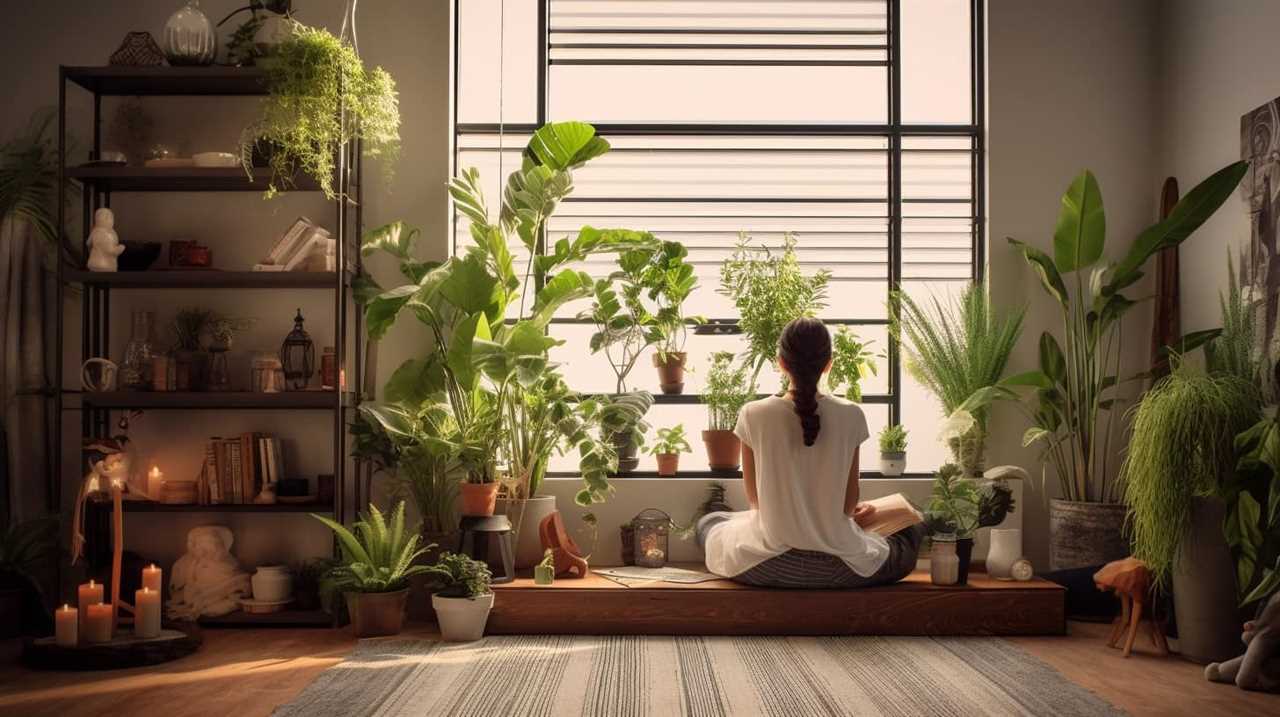
How Can Parents Instill Minimalist Values and Habits in Their Children?
To instill minimalist values in our children, we teach them the importance of contentment over consumerism. We engage them in decluttering and organizing activities, showing them the joy of simplicity and the freedom it brings.
Conclusion
In conclusion, implementing minimalist living in a family setting can bring numerous benefits.
Did you know that the average American home contains over 300,000 items? By embracing minimalist principles and reducing clutter, families can create a more peaceful and organized environment.
Not only does this lead to less stress and more time for meaningful activities, but it also teaches children important life skills.
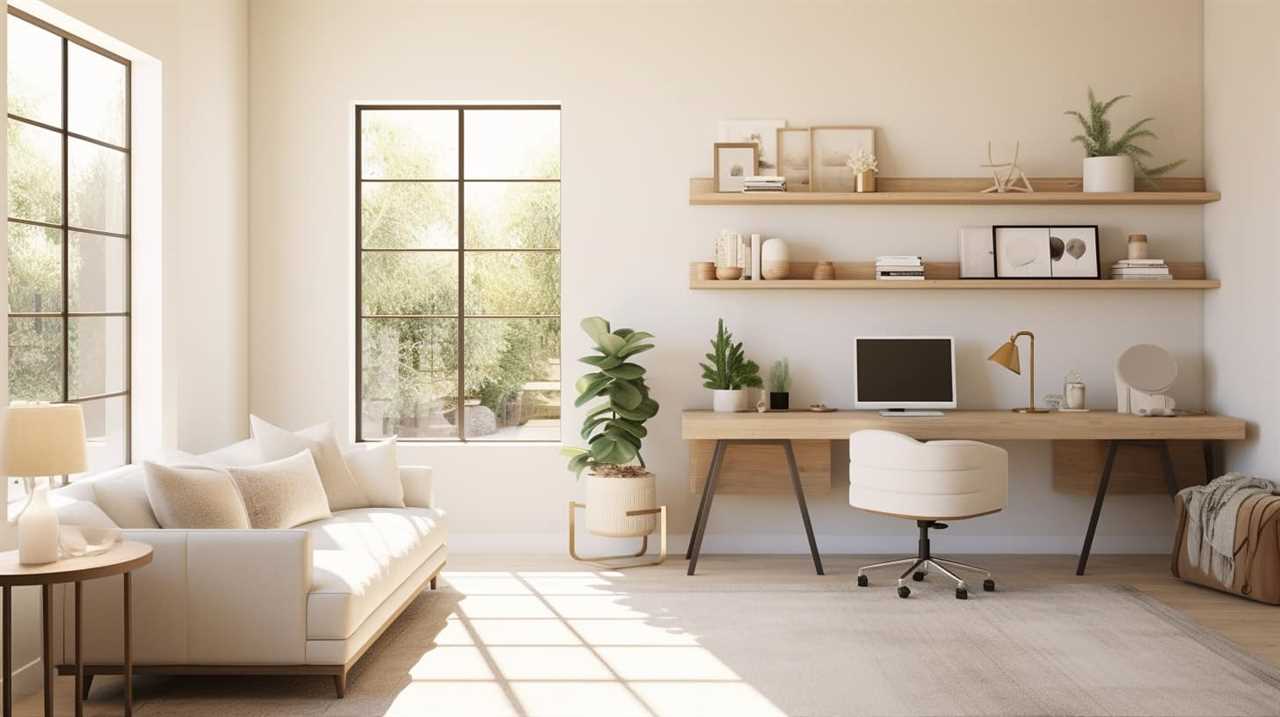
By making intentional choices about what we bring into our homes, we can create a space that truly reflects our values and priorities.
I’m Theodore, and I love tiny houses. In fact, I’m the author of Tiny House 43, a book about tiny houses that are also tree houses. I think they’re magical places where imaginations can run wild and adventures are just waiting to happen.
While tree houses are often associated with childhood, they can be the perfect adult retreat. They offer a cozy space to relax and unwind, surrounded by nature. And since they’re typically built on stilts or raised platforms, they offer stunning views that traditional homes simply can’t match.
If you’re looking for a unique and romantic getaway, a tree house tiny house might just be the perfect option.










